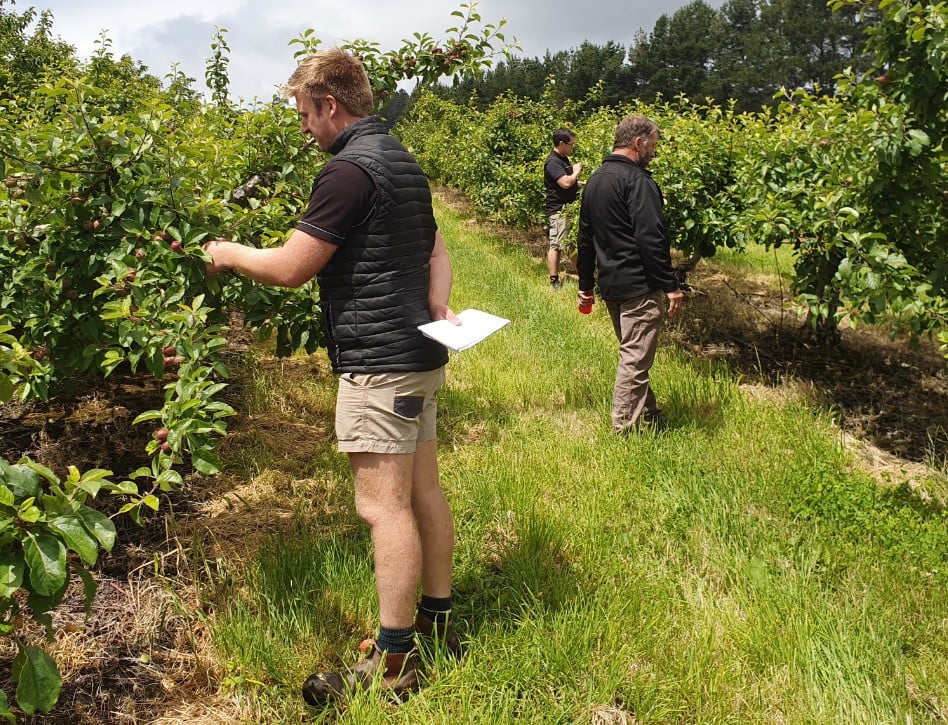Grower name: John Evans
Location: Geeveston, Tasmania
Background: Codling moth, black spot and lightbrown apple moth (LBAM) are under control. Despite the use of chlorpyrifos sprays from early green tip until early pink bud earwigs are still contributing good control of codling moth and wooly apple aphid. The parasitoid wasp Aphelinus mali that attacks wooly apple aphid is still present. The spray program has not caused any mite issues.
What are the main IPDM issues being focussed on?
John wants to capitalise on the low pest and disease population and attempt to further reduce pesticide use while maintaining effective control and confidence in the approach being taken.
What are you doing currently with IPDM? The Action Plan includes:
• Establish codling moth traps along the border with neighbour and in a transect parallel to the border traps but through the middle of the orchard
• Remove the large Macrocarpa tree over late autumn/winter and assess changes in dimple bug damage in 2019-20
• Develop some plots, within the orchard, in which some pesticides are not used. Compare populations of pest and beneficial species, and damage levels, in these plots against what is experienced in the treated plots.
• Consider monitoring for budworm and looper activity from pink bud through to 2 weeks after petal fall. Initially look for budworm adults around lights as an indicator, and check flowers for presence of eggs. Eggs are distinctive, with ridging visible with a hand lens and you can also see developing larvae in the eggs as they get closer to hatching
• Develop a sampling plan for pest populations and levels of damage, then implement plan
• Install a weather station in the block so that temperature and leaf wetness data and trapping results can be used in a predictive model to guide the need for sprays
What has worked well?
Monitoring for budworms and dimpling bug. No issues with mites but it is still early in the season.
What hasn’t worked well?
Have not had time to remove Macrocarpa tree.
What would you do differently next time?
• Install an additional weather station to provide localized data that can be fed into a prediction model for CM, LBAM and scab.
• Remove the Macrocarpa tree that is probably supporting Dimple bug over winter

